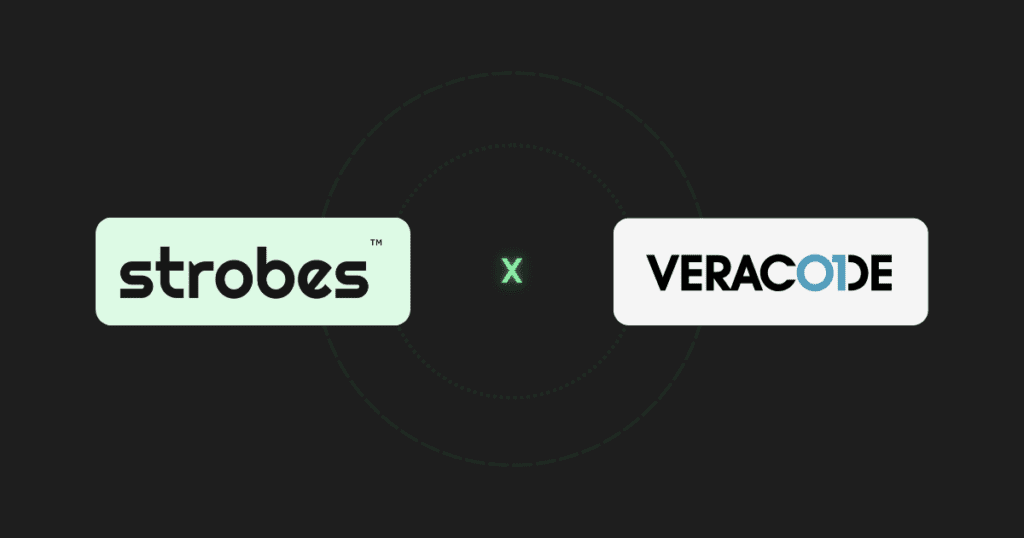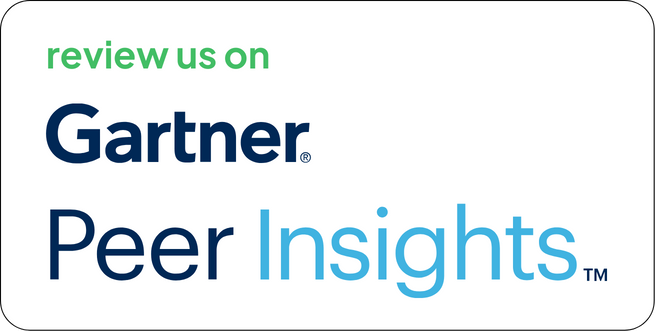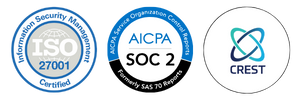Security programs often rely on Veracode to surface vulnerabilities in application code and runtime behavior.
Whether through Static Application Security Testing (SAST) or Dynamic Application Security Testing (DAST),
Veracode identifies issues early, but the work doesn’t end there.
Detection is only half the equation. Without context, correlation, and coordination, these findings remain stuck in a dashboard unactioned, unprioritized, and unaccounted for. That’s where Strobes come in.
As part of its Continuous Threat Exposure Management (CTEM) platform, Strobes integrates with Veracode to streamline the post-scan process from enrichment to assignment to closure.
Why Veracode Alone Isn’t Enough
Veracode is a trusted tool across enterprise AppSec programs. It scans codebases during development (SAST) and during runtime or pre-deployment staging (DAST). You get:
- Precise identification of vulnerable functions and libraries
- Contextual recommendations tied to CWE, OWASP, and CVSS
- Easy CI/CD integration for DevSecOps workflows
But Veracode isn’t designed to:
- Correlate results across SAST, DAST, SCA, or third-party scanners
- Adjust prioritization based on exploitability or asset business value
- Close the remediation loop via automated ticketing and validation
- Provide executive-level reporting or SLA tracking
These gaps reduce the effectiveness of your AppSec effort, especially at scale.
The Purpose of Veracode Integration with Strobes
The Veracode Integration with Strobes is designed for teams who:
- Run frequent Veracode scans across multiple applications
- Are overwhelmed by repeated findings and noisy alerts
- Want to prioritize issues based on actual risk, not just severity labels
- Need remediation metrics and ownership clarity
- Require audit-ready reports for GRC and executive stakeholders
By linking Veracode directly with Strobes, application security becomes a connected, traceable, and scalable function, not a siloed checkbox activity.
What the Integration Enables
1. Automated Data Ingestion
Strobes connects with Veracode using token-based authentication and API access. Once set up, it pulls:
- Scan metadata (project, pipeline, repo, timestamp)
- Vulnerability findings from SAST, DAST, and Software Composition Analysis (SCA)
- Attributes like CWE, CVSS, file path, line numbers, data flow, and remediation tips
You can configure the ingestion frequency ad-hoc, scheduled, or tied to CI/CD events.
2. Normalization and Correlation
Veracode findings are mapped into the Strobes data model. This enables:
- Deduplication of recurring issues across branches, versions, or scan types
- Correlation with vulnerabilities from other tools (e.g., Snyk, SonarQube, Checkmarx)
- Merging of DAST and SAST results tied to the same application asset
This removes noise and gives you one clean, consolidated view per vulnerability per application.
3. Risk-Based Prioritization
Not all high-severity findings require equal urgency. Strobes re-evaluates each Veracode issue using:
- Threat intelligence (e.g., exploit availability, trending CVEs)
- Asset metadata (e.g., prod vs test, external vs internal, revenue-bearing systems)
- Business rules (e.g., flagged assets, regulated environments, critical user flows)
The result is a dynamic risk score tailored to your org, highlighting the top 3–5% of issues that carry real business impact.
4. Remediation Workflow Automation
Strobes isn’t just a viewer of Veracode findings. It activates remediation by:
- Auto-creating Jira or Azure Boards tickets for high-priority issues
- Assigning tasks based on asset ownership or vulnerability category
- Launching SLA timers to track fix deadlines
- Sending contextual updates via email, Slack, or MS Teams
- Validating fixes through re-scan data or closure conditions
This ensures that vulnerabilities don’t just get found, they get fixed.
5. Reporting and Visibility
Security isn’t just about fixing bugs. You need to show progress — to developers, to leaders, and to auditors.
Strobes provide:
- Executive Dashboards – Risk posture, SLA adherence, exposure windows
- App Owner Views – Outstanding vulnerabilities by app/component/owner
- Compliance Reports – NIST, PCI DSS, ISO 27001 mapping
- Drilldown Tables – Technical findings for RCA, patch verification, and audit
You move from static CSV exports to real-time, filtered, audience-specific insights.
What Makes The Veracode Integration with Strobes Valuable
Eliminate Redundant Triaging
SAST and DAST scans frequently return overlapping results, especially across application updates. Strobes deduplicates these at ingestion, saving triage hours and reducing developer fatigue.
Surface Actionable Issues
CVSS-based triage alone is risky. A medium-severity issue in a public-facing login function deserves more attention than a critical CVE on a test branch. Strobes integrates context so your prioritization isn’t based on guesswork.
Drive Ownership at Scale
AppSec programs often stall because findings aren’t clearly assigned. Strobes enforces ownership automatically, based on asset groups, application tags, or user-defined mappings.
Enable Board-Ready Reporting
You can’t go to leadership with raw scan logs. Strobes summarizes remediation efficiency, SLA trends, and application-level risk in visual dashboards that translate into strategy.
Support Multi-App, Multi-Team Operations
Whether you’re managing five apps or fifty, across regions or product lines, this integration scales with your structure. Custom roles, segmented dashboards, and multi-tenant support are built-in.
Ideal for These Use Cases
This integration is designed for:
- Application Security teams working with multiple development squads
- DevSecOps teams embedding security into CI/CD pipelines
- Compliance-heavy industries need audit tracking and closure evidence
- Global product teams running Veracode in complex, multi-app environments
Final Thought
Veracode is excellent at surfacing code-level issues. Strobes ensures that these findings are not just seen, but actioned, tracked, and closed, with full context.
If you’re struggling with alert fatigue, reporting gaps, or remediation delays, this integration can simplify your workflow and improve your AppSec ROI.
Want to See It in Action?
For a personalised walk through contact with our solutions team and discover how to get more value from your Veracode scans with Strobes.






